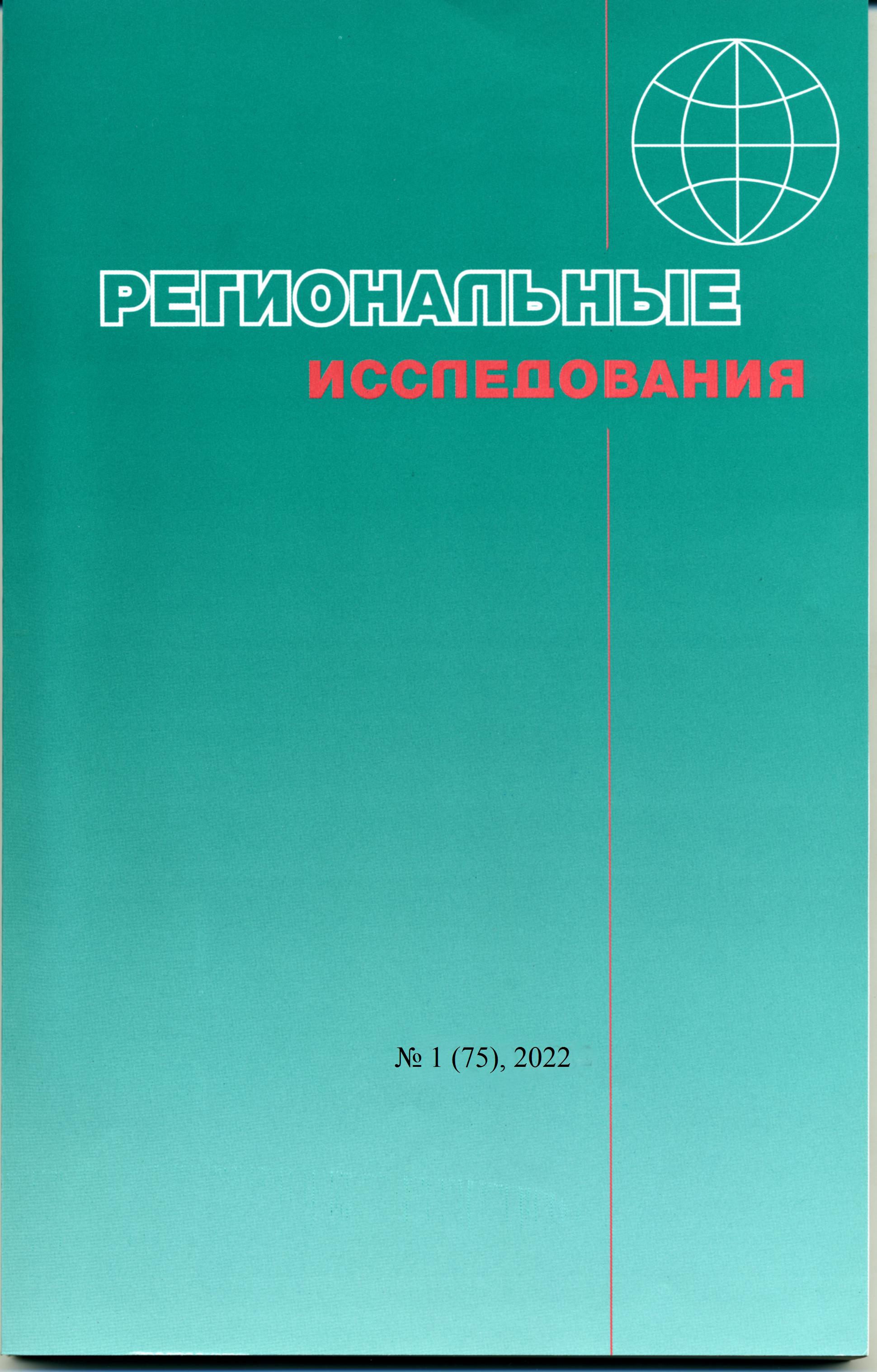Makushin M.A., Goryachko M.D. Geographical patterns of warehousing property market in Moscow agglomeration
DOI:
https://doi.org/10.5922/1994-5280-2022-1-2Keywords:
logistics infrastructure, Moscow agglomeration, warehouses, warehouse real estate, transportation sector, logistics densityAbstract
The article analyzes the current trends in the warehouse real estate market development in Moscow and the Moscow region, the geography of large warehouses’ construction, the distribution density of the warehouse real estate in Moscow agglomeration. It is revealed that the most popular logistics destinations are the north-western (Zelenograd, Radumlya), southern (Domodedovo, Belye Stolby) and eastern (Balashikha, Noginsk) with the largest cargo flows and free areas for construction, as well as the Central Ring Road (Bely Rast, Sever-4), due to an increase in the movement speed along which the time of cargo delivery is reduced. Less busy destinations are south-western (Vorsino) and north-eastern (Sofrino, Pushkino). In the western (Istra) and northern (Dmitrov) directions, new storage facilities appear mainly between the MKAD and the Central Ring Road due to relatively low transit cargo flows in these directions and the predominance of water and forest lands in the land use structure. It is noted that the logistical influence of the Moscow agglomeration extends beyond the Moscow region in the southwestern (Obninsk), north-eastern (Pereslavl-Zalessky) and western (Gagarin) directions. The main conclusions are supported by statistical information and mathematical estimates.
Thanks
The authors thank A.A. Popov for the data provided.
Financing
The article was prepared within the framework of the grant of the Russian Science Foundation "Center-periphery in the Russian industrial space" (project number 22-27-00425).
References
Антонов Е.В., Махрова А.Г. Крупнейшие городские агломерации и формы расселения надагломерационного уровня в России //Изв. РАН. Сер. геогр. 2019. № 4. С. 31-45. DOI: 10.31857/S2587-55662019431-45.
Бабурин В.Л., Горлов В.Н., Шувалов В.Е. Совершенствование территориальной структуры Московского региона. Экономико-географические аспекты // Вестн. Моск. ун-та. Сер. 5, География. 1985. № 1. С. 26–31.
Бабурин В.Л., Горлов В.Н., Шувалов В.Е. Роль и основные функции внешней зоны в территориальной структуре Московского региона // Вестн. Моск. ун-та. Сер. 5, География. 1988. № 4. С. 24–30.
Бродецкий Г.Л., Дыбская В.В., Гусев Д.А., Кулешова Е.С. Распределение товаров в складской сети: оптимальные решения по многим критериям //Логистика и управление цепями поставок. 2017. № 1. С. 67–81.
Гасанов М. Логистика без МКАД: новые условия и новые решения. [Электр. ресурс]. URL: https://www.vedomosti.ru/business/articles/2021/03/25/863238-logistika-mkad (дата обращения: 07.03.2022).
Гнеденко Е.Д., Казьмин М.А. Земельная реформа и проблемы развития Московского столичного региона // Государственное управление. Электронный вестник. 2013. № 36. С. 143–156.
Домнина С.В., Левина Т.В. Транспортно-логистическая система Московской агломерации: анализ состояния и перспективы развития // Логистика и управление цепями поставок. 2017. № 5. С. 51–70.
Дыбская В.В., Сергеев В.В. Логистика в 2 ч. Ч. 1 / под общ. ред. В.И. Сергеева. М.: Изд-во «Юрайт», 2019. 317 с.
Прокофьева Т.А., Карнаухов С.Б., Архипов А.П. Развитие логистической инфраструктуры в московском транспортном узле // РИСК: Ресурсы, информация, снабжение, конкуренция. 2011. № 4. С. 70–83.
Прокофьева Т.А., Клименко В.В. Стратегия развития транспортно-логистической системы в Московском регионе // Логистика и управление цепями поставок. 2012. № 3 (50). С. 57–63.
Рынок складской недвижимости. Москва. 2019. // Knight Frank Research. 2020. [Электр. ресурс]. URL: https://www.knightfrank.ru/research/rynok-skladskoy-nedvizhimosti-moskva-2019-god-6928.aspx (дата обращения: 20.01.2022).
Рынок складской недвижимости. Москва. 2020. // Knight Frank Research. 2021. [Электр. ресурс]. URL: https://www.knightfrank.ru/research/rynok-skladskoy-nedvizhimosti-moskva-2020-7824.aspx?search-id=3ec97431-bba0-4f3f-8ac8-c11d72661ef7&report-id=596&rank=1#archived-reportsyear-1 (дата обращения: 20.01.2022).
Транспортная инфраструктура и экономический рост. М.: Изд-во «Перо», 2019. 142 с.
Шошинов В.В., Сапожников В.Н. Развитие транспортно-логистической системы в Московской области в 2013–2015 годах // Проблемы экономики и юридической практики. 2013. № 2. С. 253–256.
Dablanc L., Ogilvie S., Goodchild A. Logistics sprawl: differential warehousing development patterns in Los Angeles, California, and Seattle, Washington //Transportation Research Record. 2014. Vol. 2410. № 1. P. 105–112. DOI: 10.3141/2410-12.
Glasmeier A.K., Kibler J. Power shift: the rising control of distributors and retailers in the supply chain for manufactured goods // Urban Geography. 1996. Vol. 17. № 8. P. 740–757. DOI: 10.2747/0272-3638.17.8.740.
Kolko J. Urbanization, agglomeration, and coagglomeration of service industries // Agglomeration economics. University of Chicago Press, 2010. P. 151–180. DOI: 10.7208/9780226297927-007.
Li G. et al. Location characteristics and differentiation mechanism of logistics nodes and logistics enterprises based on points of interest (POI): A case study of Beijing // Journal of Geographical Sciences. 2017. Vol. 27. № 7. P. 879–896. DOI: 10.1007/s11442-017-1411-7.
Mariotti I. Transport and Logistics in a globalizing world. A focus on Italy. Springer Verlag, 2015. 92 p. DOI: 10.1007/978-3-319-00011-4.
McKinnon A. Logistics and land: the changing land use requirements of logistical activity // 14th Annual Logistics Research Network Conference, 9th – 11th September 2009, Cardiff. P. 767–775. [Электр. ресурс]. URL: https://www.abtslogistics.co.uk/green-logistics-resources/4e82c1db-cf3b-4d8a-bf5c716512cb90c6_McKinnon.pdf (дата обращения: 20.01.2022).
Rietveld P. Spatial economic impacts of transport infrastructure supply // Transportation Research Part A: Policy and Practice. 1994. Vol. 28. № 4. P. 329–341. DOI: 10.1016/0965-8564(94)90007-8.
Rivera L., Sheffi Y., Welsch R. Logistics agglomeration in the US // Transportation Research Part A: Policy and Practice. 2014. Vol. 59. P. 222–238. DOI: 10.1016/j.tra.2013.11.009.
Sun B., Li H., Zhao Q. Logistics agglomeration and logistics productivity in the USA // The Annals of Regional Science. 2018. Vol. 61. № 2. P. 273–293. DOI: 10.1007/s00168-018-0867-4.
Watson D.F., Philip G.M. A refinement of inverse distance weighted interpolation //Geo-processing. 1985. Vol. 2. № 4. P. 315–327.
Постановление Правительства Москвы № 379-ПП от 22.08.2011 «Об ограничении движения грузового автотранспорта в городе Москве и признании утратившими силу отдельных правовых актов Правительства Москвы». [Электр. ресурс]. URL: https://www.mos.ru/authority/documents/doc/9882220/ (дата обращения: 20.01.2022).

